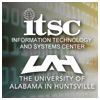Meet Dizzy the Distometer: Creating a character and telling his story using ESRI Story Maps to increase use of Global Precipitation Measurement Ground Validation precipitation data
| Title | Meet Dizzy the Distometer: Creating a character and telling his story using ESRI Story Maps to increase use of Global Precipitation Measurement Ground Validation precipitation data |
| Publication Type | Poster |
| Year of Publication | 2019 |
| Authors | Smith, D |
| Secondary Authors | Sinclair, L |
| Tertiary Authors | Kollmeyer, R |
| Subsidiary Authors | Wang, L, Conover, H |
| Conference | AMS 2019 |
| Date Published | 01/2019 |
| Conference Location | Phoenix, Arizona |
| Keywords | disdrometer, ESRI Story Map, outreach |
| Abstract | The NASA Global Hydrology Resource Center (GHRC) Distributed Active Archive Center (DAAC) recently released the story of Dizzy the Disdrometer using the ESRI Story Maps. An ESRI Story Map is an online tool that provides an interactive user experience of narrative text, maps, images, and multimedia content. The Dizzy story map is an approachable, broad-audience way to educate users about the use of disdrometers in the NASA Global Precipitation Measurement (GPM) Ground Validation (GV) program. The variety of GPM GV field campaigns provided ground and airborne precipitation datasets in support of the physical validation of satellite-based precipitation retrieval algorithms. The disdrometer was used predominantly in all GPM GV field campaigns to measure rain, hail, sleet and snow, the full variety of precipitation. GHRC DAAC scientists worked with our graphic designer to develop the character of Dizzy, and used the character to share information about each GPM GV field campaign, and show disdrometer measurement examples. In this presentation, we demonstrate the Dizzy ESRI Story Map, summarize the story map contents and provide usage metrics used to assess impact of this outreach effort since publication of the story map in Summer 2018. This alternative presentation method provides a means for general users to learn more without any technical background and to explore what can often be complex scientific data and concepts. |
Involved Persons:




